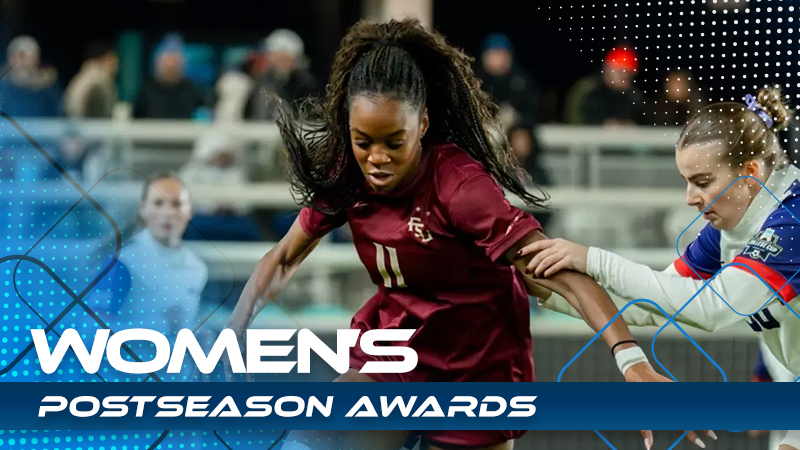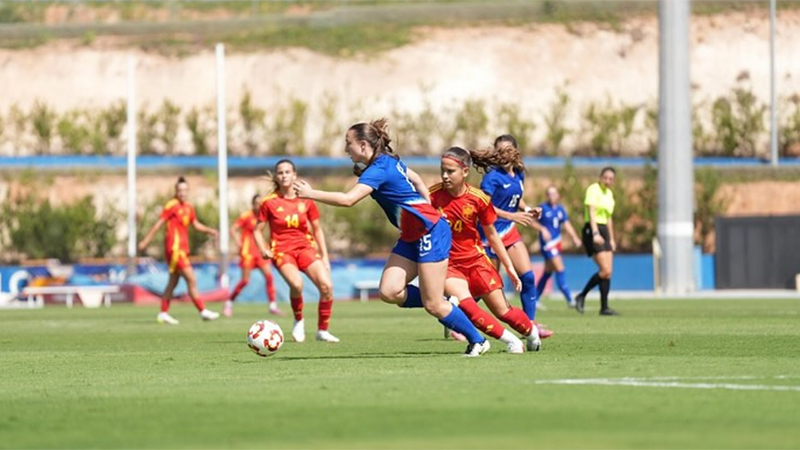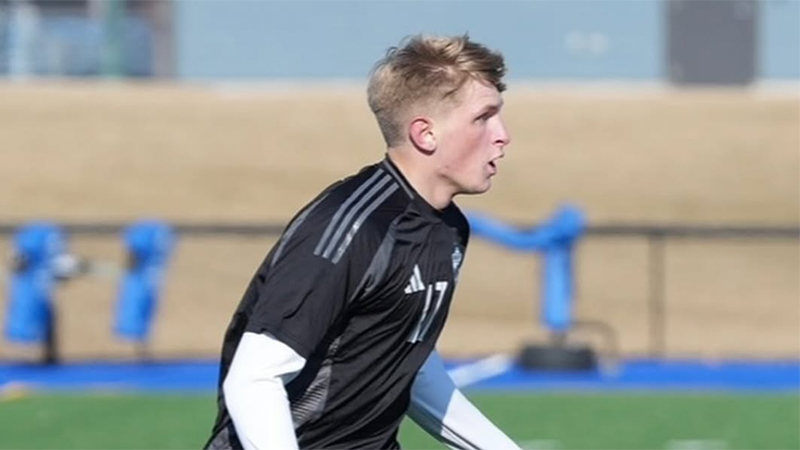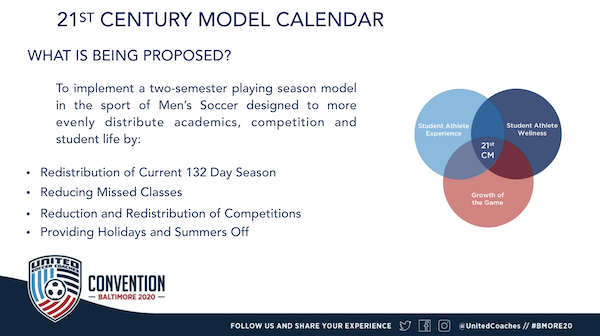 Calendar
CalendarHistoric vote for 21st Century Model looms

If you don’t evolve, you die. That’s the dilemma that college soccer has faced for decades. Now, there is a chance for Men’s Division I soccer to make a change, and there is something you can do to help.
The most important moment for the growth of soccer in the United States this year will not happen on a field. It will happen with a vote in April at the 2020 NCAA Division I Council Meeting.
Legislation to modify the Men’s Division I Soccer season, also known as the 21st Century Model, is up for a vote before the NCAA. After being formally submitted to the NCAA in July of 2019 and receiving a clarifying edit in February of 2020, the bylaw amendment was officially added to the docket for the April vote.
The 21st Century Model is a proposal to redistribute the current model of a fall-only season to a two-semester schedule for Men’s Division I soccer. It’s not an expansion, but rather a redistribution of the games so student-athletes are not overwhelmed and bogged down during a three-month portion of their collegiate lives.
 Calendar
CalendarThe historic significance of this vote is without question. College soccer has been stuck in the same model for decades without any real modifications. Even though it seemed like nothing was changing, there has been an incredible amount of work going on behind the scenes over the past decade to get this legislation to a vote and to do the necessary research to support the new model.
It picked up momentum in 2013 when the conversation reignited with then West Virginia Athletic Director Oliver Luck. Over the last seven years, there has been steady progress toward this point with commissioned studies to support the change. With behind-the-scenes work from Sasho Cirovski (Maryland), Jeremy Gunn (Stanford), Carlos Somoano (North Carolina), Kevin Grimes (California), the 21st Century Model went from a dream to a realistic proposal.
“I think the leaders of this in Sasho, Carlos, Jeremy Gunn, and Kevin Grimes, have done a good job educating the masses and making sure coaches are responsible for educating people around their campus from college presidents to faculty representatives to administrative to athletic training to academic advising all the way down to our players,” Portland head coach Nick Carlin-Voigt told TopDrawerSoccer in a phone interview last week. “When people look at the blueprint and look at the model, it’s really hard not to be in support of this. It makes complete sense. It’s long overdue. This will move college soccer into the 21st century.”
“Everyone is open to listening,” SMU head coach Kevin Hudson told TopDrawerSoccer in a telephone interview last week. “Everyone wants to learn more. Everyone has heard about it at the surface. It’s hard to educate everyone, but that’s our role at this point. We are trying to educate as many people on campus as possible.”
“[The admins] all have the same questions. It all comes down to: 'you’re now playing more games, you’re playing over a longer period of time',” Hudson said. “In reality, we’re not. It’s the same amount of time we are playing. It’s just reshuffling the games over the two semesters. We’re still playing games. We played last weekend. We play this weekend. We play next weekend. They’re still games. It’s just they don’t count. [With the new model] they would.”
The current outdated model for men’s Division I soccer season allows 25 games (plus postseason) with the 18 regular season games occurring during a three-month period (August to November). The 21st Century Model reduces the amount of games from 25 to 23. Twenty of those 23 games would be part of the regular season and spread out from September to April with a break for the winter holidays.
“Playing in this really compact season leads to higher stress and injuries,” Denver head coach Jamie Franks told TopDrawerSoccer in a phone interview last week. “If you play Friday-Sunday, the game on Sunday lacks quality. I would encourage the administration to look at how (the 21st Century Model) increases classroom participation. It increases competition because it is only one game a weekend. I think five-six years ago when this model started coming up, we didn’t have enough sports data that would suggest if you run five-seven miles on a Friday that it’s really harmful for the student-athletes to run five-seven miles again on a Sunday. If you are a cross country runner or triathlon athlete, if you are running five-seven miles on a Friday, then usually two days later (Sunday) is your day off.”
Men’s Division I coaches have turned into professors this spring as they are tasked with educating those around the campus. The hope is that dispelling some myths can turn the tide in favor of more support for the 21st Century Model from those outside of the sport.
“With a little bit of education, you can hopefully calm those nerves and turn those into positives,” Hudson said.
“The real reason that I think it will pass is because whenever there is a concern, within time and educating them on [the model], I’ve seen the change. ‘Oh that’s going to cost money’ Well, actually it’s not,” Franks said. “Here’s the budget analysis. Here’s how you forecast it. There are three groups that we are actively listening to: the student-athletes, compliance, and administrations. After concerns have been raised, I think there is easy solutions to each. I would encourage people to go to the website and gather the information for themselves. There are no concerns that I have heard that are compelling enough for us not to do it.”
The goal of the model is to create a better environment for the student-athlete. They are the reason Cirovski, Gunn, and all other coaches are so passionate about this. The student-athletes clearly see the benefit of moving to this model as well. Eighty percent of student-athletes supported the move to a two-semester model, according to a survey done by the United Soccer Coaches in 2017.
“Ultimately, this is about the players,” Carlin-Voigt said. “This isn’t about the coaches, the administrators, or the college presidents. This is about giving the players the best experience possible. Without a doubt, the 21st Century Model accomplishes that.”
There are a number of benefits for the student-athletes. Some of them are obvious, and others might not be so obvious. Each coach had a different approach when explaining the benefits to the players.
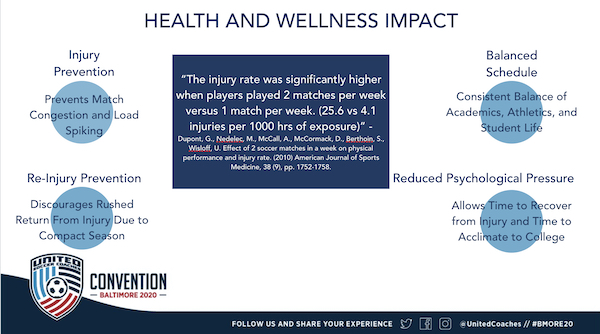 Benefits
Benefits
“There’s a multitude of benefits,” Hudson said. “You can take any one angle, but it’s probably better to look at them in summary. Obviously, we all talk about the health, safety, and well-being of the student-athletes.”
“I think it’s really simple,” Franks said when asked about what he highlights on when discussing the 21st Century Model with student-athletes. “Reduce classes missed. Higher graduation retention. Less injuries and an overall better balance for the student-athlete experience both in the classroom and on the field. Soccer is not meant to be a 90-day season with 20 games squeezed in. If we are talking about experience, the freshmen get a better transition to their first year because it’s spread out over the course of the year. The student-athletes get a true summer break to get internships, play on summer teams, or go on vacation.”
“As it stands now, the summer is too important of a time because of how short preseason is,” Franks added. “The freshmen are going to have to redshirt less. The athletic experience in itself will be enhanced because you are just traveling on the weekends and there are more meaningful training sessions during the week that more teaching can take place. This ultimately will lead to more balance within the schedule for your daily academics, soccer, and social.”
“We talk about the evolution of the game in this country,” Carlin-Voigt said. “The reality is that college soccer has not followed that same evolution. We need to continue to grow this sport and the 21st Century Model gives us the best opportunity - a better model to benefit all student-athletes across all programs. Student-athletes want to train. They want to prepare for games in the right way. No where else in the world do they think it’s a good idea to play three games in six days. This really gives the student-athletes the best opportunity to develop, to be in a proper system where they are training the full week for one game. As we know from all of the literature and research, [the 21st Century Model] reduces injuries and it reduces missed class time so it makes the student-athlete experience better.”
One additional benefit of the 21st Century Model would be a better showcase for the marquee event of the season, College Cup. With only one game per weekend, the student-athletes who advance to that stage would not be subject to playing two games in 36 hours in the biggest moment of the season.
“To me, the 21st Century Model would also enhance our championship model,” Franks said. “As it stands now, playing Friday and Sunday is harmful to the student-athlete’s safety and overall quality of the game. Playing less than 36 hours after an emotional Friday evening game does not put our best product on the field in the championship. The weather will better in May or June is just an added bonus. With the 21st Century Model, there will no longer be midweek games and the focus will be on the weekend where hopefully that generates more fanbase in attendance and overall a better atmosphere for the student-athletes.”
There is a long list of benefits for the 21st Century Model, but the vote in April is not an easy tap-in. Soccer, after all, is not a revenue sport. The coaches have done a ton of work, but they’re aware that there will be some opposition from individuals who are not well-versed in all of the reasons this model is the right path forward and from individuals who just fear change.
“You never want to count your chickens before they hatch, but I’m cautiously optimistic,” Hudson said. “There will still be and there is on most campuses there is hesitant and a little bit of uncertainty that comes with change. We are not American Football. We don’t drive revenue. Us asking for change must come with a real rationale and reasons behind why we are doing this. As long as we get the information across in a somewhat logical and elegant manner, we can drive it forward. Even my AD has questions. I’m a big proponent of it, but there are questions throughout all leagues. Even programs that are 100% behind it, there are people that still have questions on their campuses. It’s human nature, change brings about uncertainty.”
“We are all pushing really hard,” Carlin-Voigt said. “When you step back and look at this through the lens of an administrator, there are some perspective hurdles. One of them being why are we doing this just for the men and not for the women. I think that has to be addressed if we want to get there. I also think for an administrator standpoint, you are also going down a slippery slope or opening up a can of worms if this sport is playing two semesters, other sports are going to want to play over two semesters. I could see administrators being afraid of costs increasing, more travel costs especially at smaller schools without big football programs. Now, you’re sharing athletic trainers. But I think those are things that are going to be figured out. They are not big hurdles. I’m personally very optimistic. I’m really hoping this passes.”
With over a month to go until the vote, there is reason for that optimism from the coaches to be shared among the US Soccer world. The numbers for the vote could be tight, but the work and passion of the leaders of the movement have started some momentum to get this passed.
The Big Ten and Atlantic Coast Conference (ACC) are the co-sponsor of the legislation with the Pac-12 offering support. The three major conferences carry 12 votes in April. The majority in each conference carries all of the votes for the conference. The 21st Century Model needs 33 votes out of 64 to pass.
“Yes, but we’re focused on the vote in April,” Franks said when asked if he believes the Summit League will vote for the 21st Century Model. “All the talk has been very constructive and straightforward with the Summit League.”
“I know in terms of the straw poll that we had in our conference recently that there is more support behind it in the last six months from the West Coast Conference,” Carlin-Voigt said about Portland’s conference. “I know, potentially, we could be a swing conference. While we only have one vote, it is a massive one. I am optimistic that the WCC is going to rally behind and get this through. I know almost unanimously our coaches are behind it, but we know that coaches don’t vote so it’s going to come down to administrators and college presidents. If you really dive into and look at the research, it’s hard to be against it. I’m optimistic, cautiously optimistic. I am positively optimistic that we can pass this and the West Coast Conference will be one of the conferences that can look back and say we were part of this historic change.”
A historic change is going to take a monumental effort and college coaches are counting on their colleagues to push that effort over the finish line with only six weeks left before the vote in late April.
Headlines
- Recruiting Roundup: December 15-21
- How Do I Get Scouted by TopDrawerSoccer?
- 2026 Women's Division I Transfer Tracker
- 2025 Women's DI Postseason Awards
- Washington Wins First National Title
- Men's College Cup Final Preview
- IMG Academy Player Rankings: Boys 2027
-
Commitments: Looking at Loyola Marymount

- NC State Advances to First College Cup Final
- Washington Dominates College Cup Semifinal

